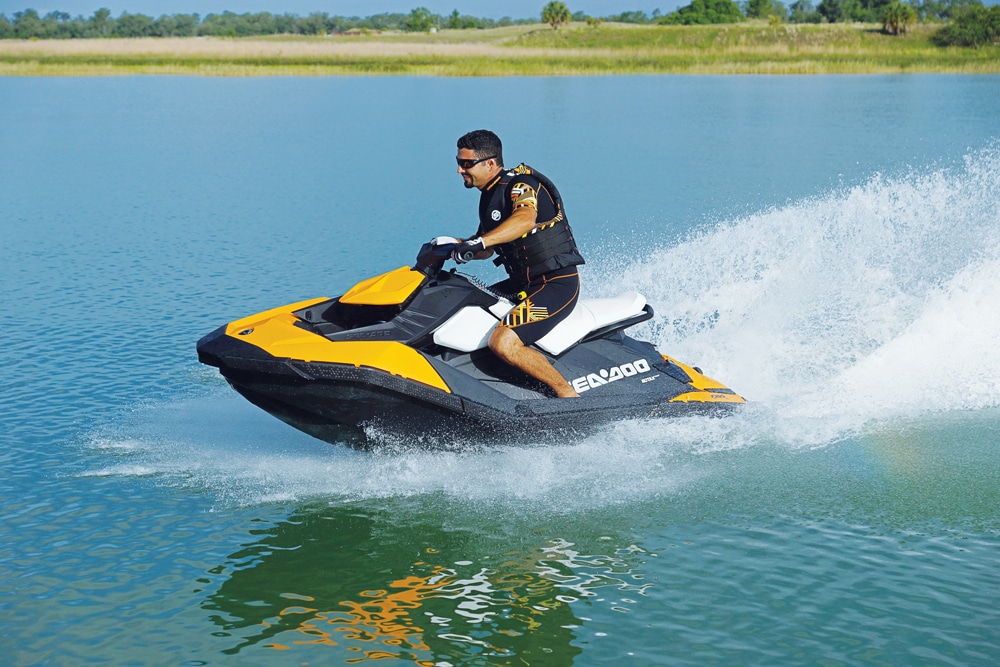
Sea-Doo Spark
Beam: 3’10”
Dry Weight: 405 lb.; 421 lb.
Storage Capacity: 0.42 gal.
Engine: Rotax 900 ACE; Rotax 900 ACE HO
Displacement: 899 cc
Rated Horsepower: 60; 90
Fuel Capacity: 7.9 gal Sea-Doo
For all its eye-popping colors, sexy angles and high-tech design, one feature of Sea-Doo’s new Spark literally screams for attention — its price. With prices of the average personal watercraft now well over the $10,000 mark, the base model Spark starts at a minimalist $4,999, a price Sea-Doo hopes will “reignite” a stagnant PWC industry. You can practically hear the boat-show hawking now, with salesmen telling customers they can get “Sparked” for a payment less than their monthly Starbucks tab.
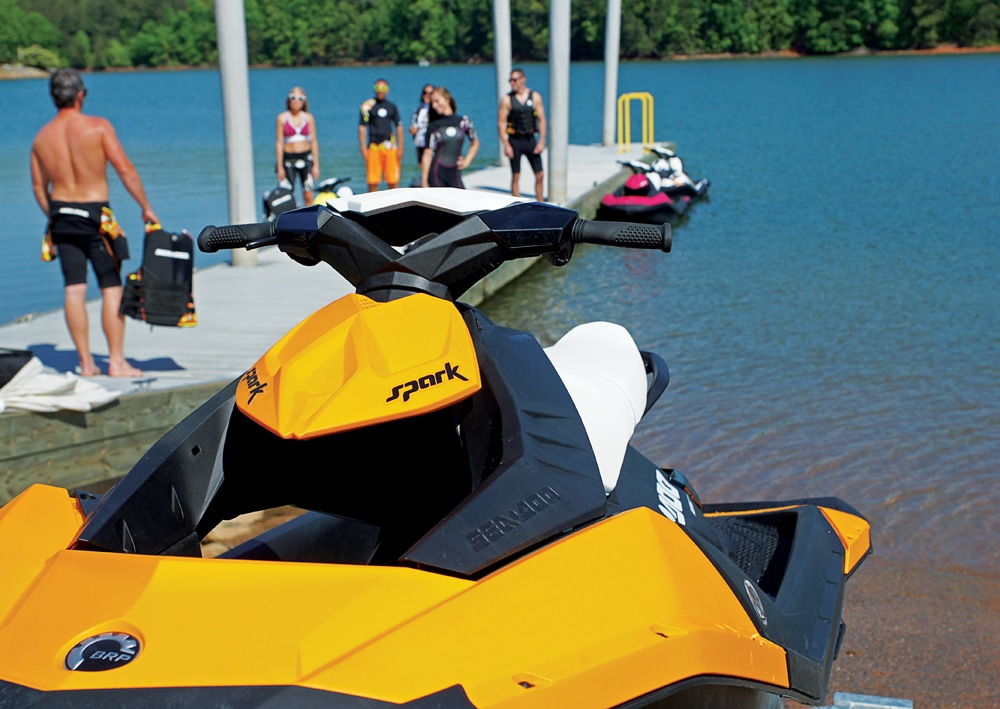
Sea-Doo Spark
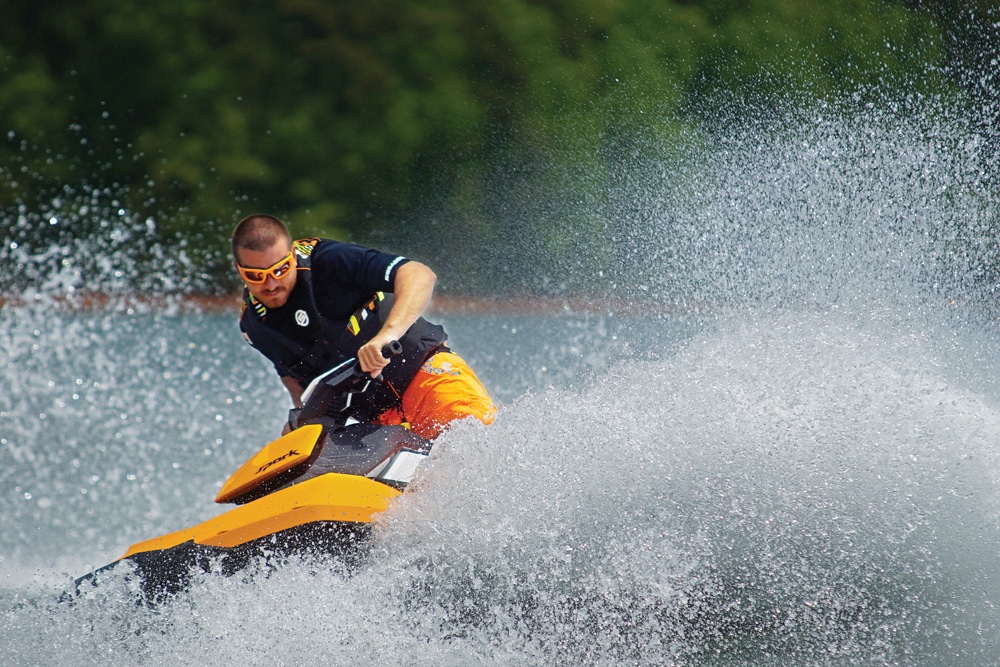
Sea-Doo Spark
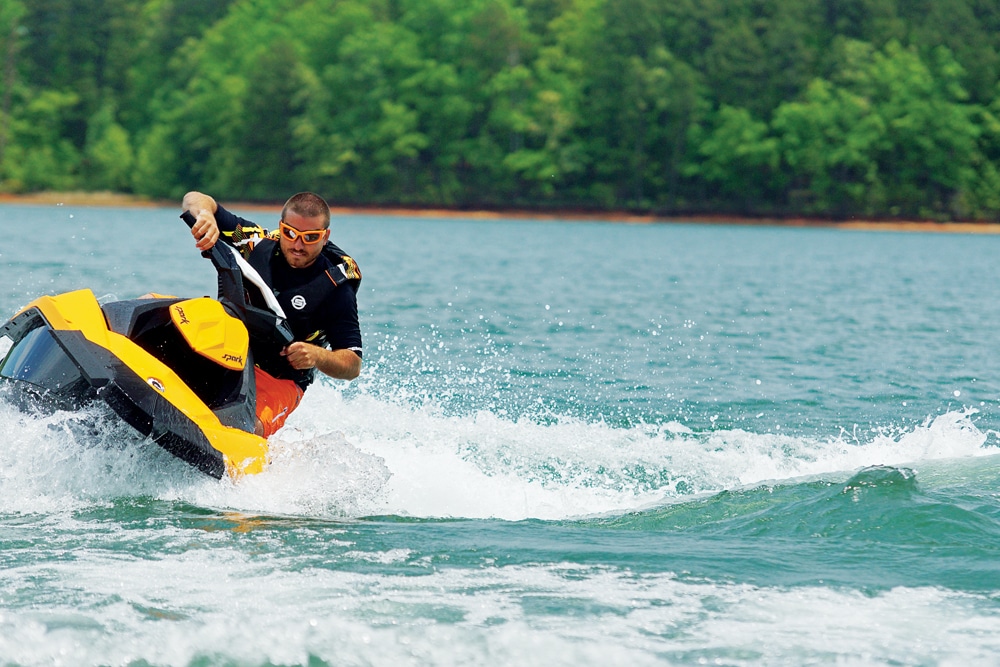
Sea-Doo Spark
How did Sea-Doo take so much off the bottom line? A portion of the answer is evident the first time you take in the Spark’s matte-finish hull. Rather than shiny, gelcoated fiberglass, both the hull and deck are made from plastic, specifically a mix of polypropylene with long-strand glass fibers. The material, dubbed Polytec, is cheaper to produce than fiberglass, and lighter to boot. The molding process results in that matte finish, an arguably trendy look that Sea-Doo used to full advantage by introducing an array of bold color choices. Sparks come in a mix of black and Pineapple (yellow), Orange Crush (orange) Bubble Gum (magenta) and Vanilla (white) as well as the all-black Licorice.
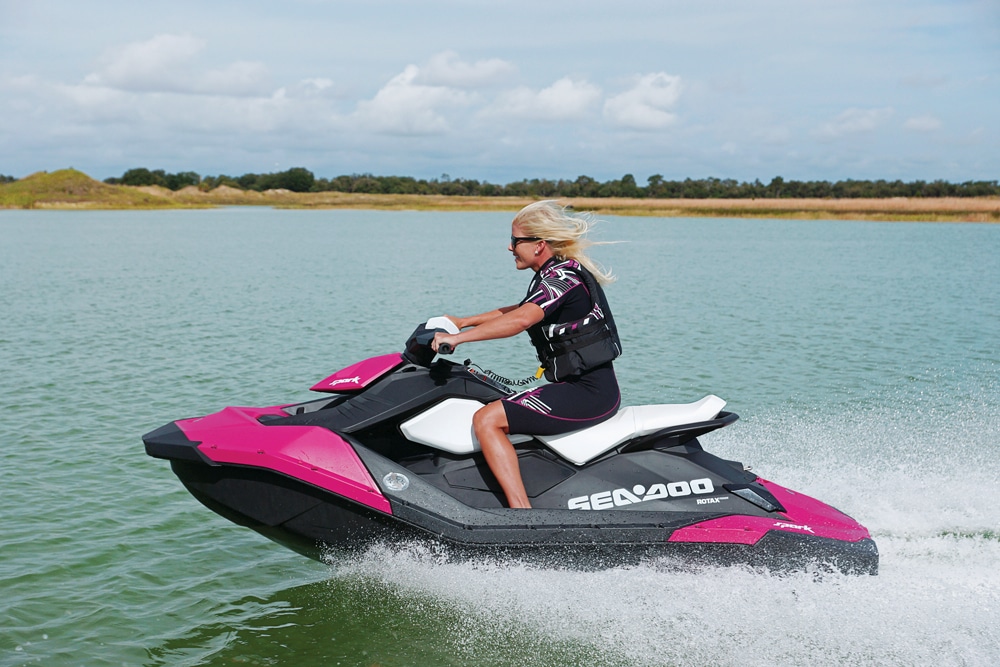
Sea-Doo Spark
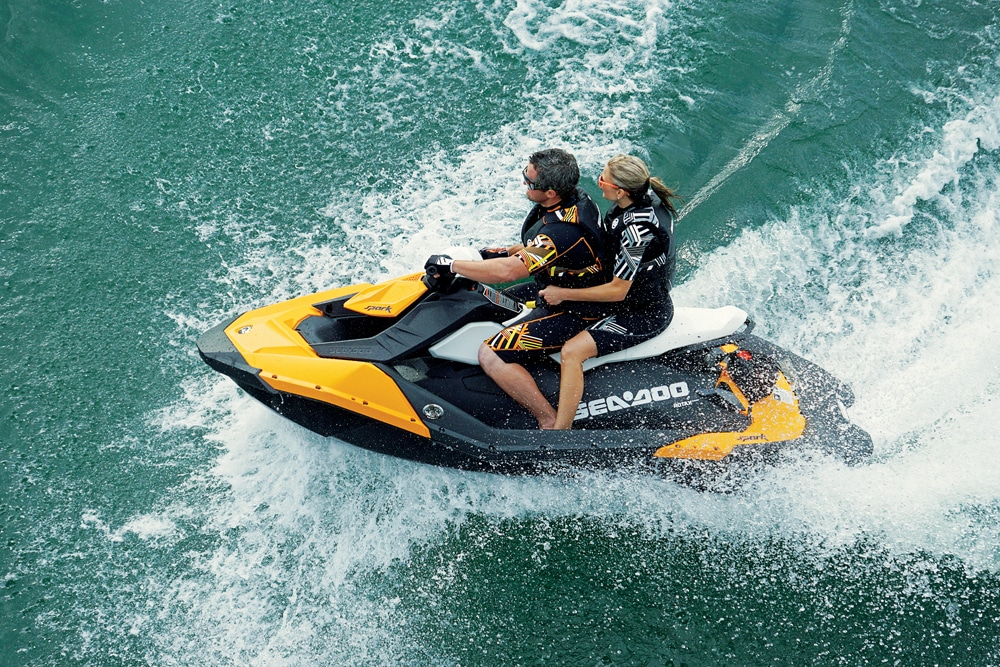
Sea-Doo Spark
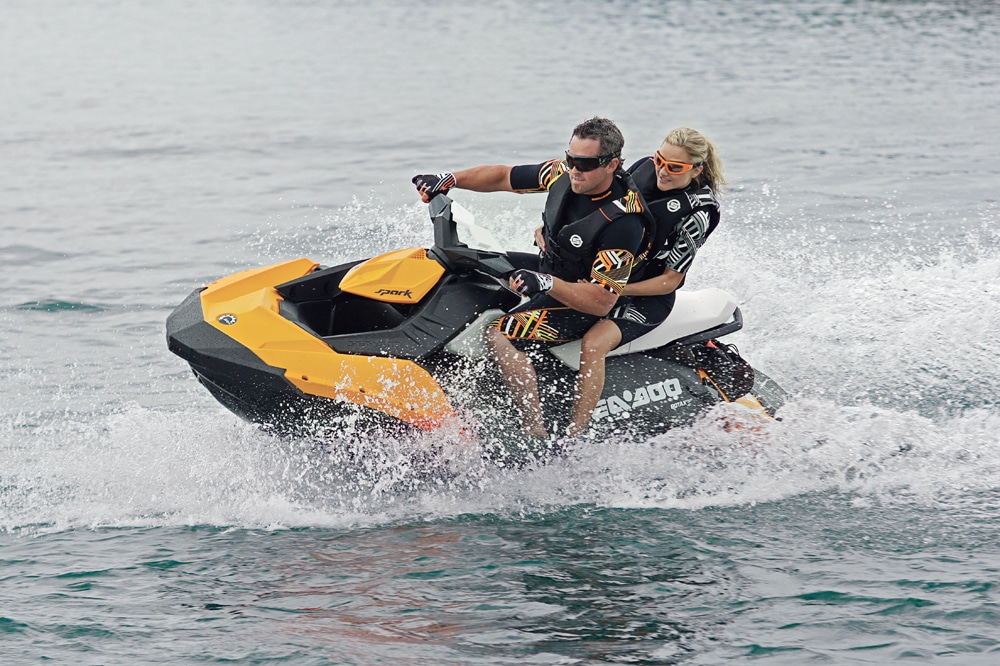
Sea-Doo Spark
The poly blend makes it difficult to chemically bond the hull and deck, so Sea-Doo turned to mechanical fasteners, sandwiching a rubber gasket between the two components and then fastening the parts together with a series of bolts and locknuts. And just like they did with that matte finish, Sea-Doo engineers turned the unconventional approach to their advantage. Rather than force a mechanic to reach into the notoriously tight confines of a PWC engine compartment, the Spark’s deck can be separated from its hull in about 10 minutes, offering unprecedented access to nearly the entire engine and fuel system. For routine owner maintenance Sea-Doo takes Apple’s “hands-off” approach, offering minimal access ports to necessary items like the dipstick, oil fill and battery but discouraging any additional tinkering under the hood.
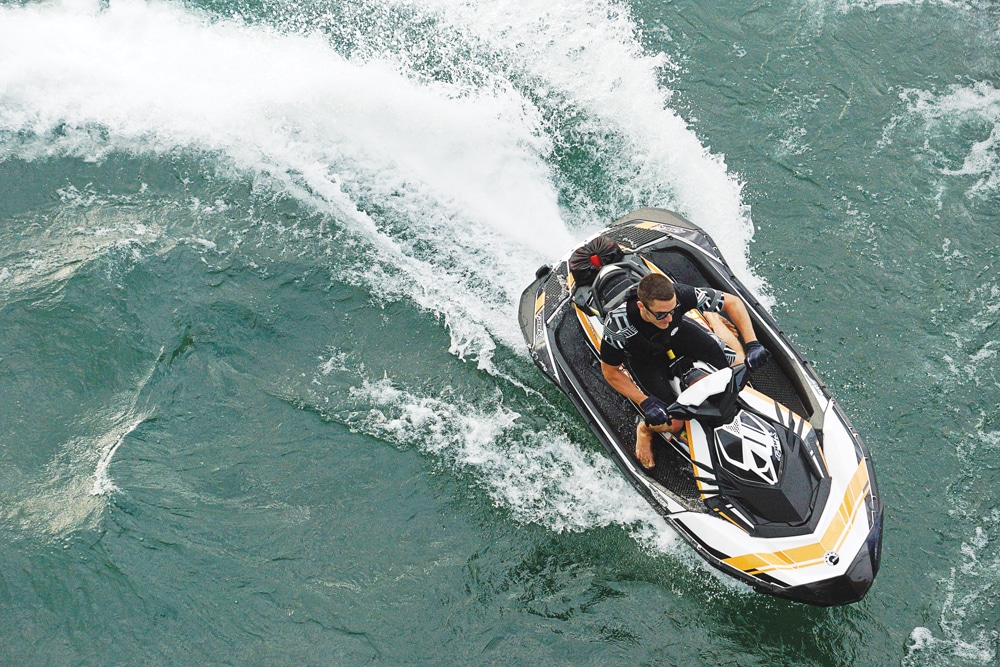
Sea-Doo Spark
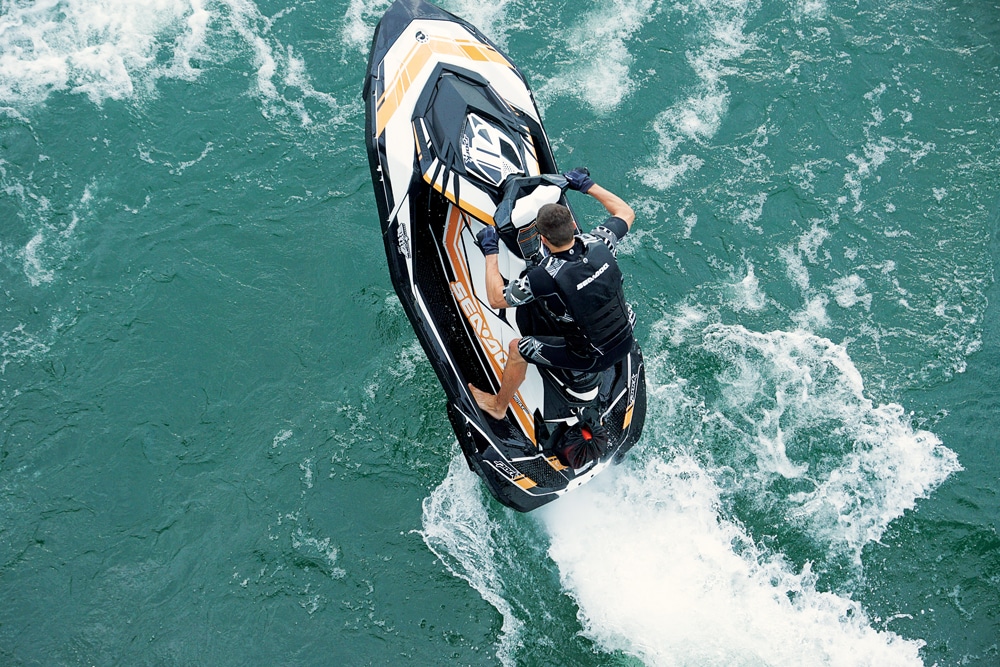
Sea-Doo Spark
Even the engine mounts required a radical rethinking. To gain the necessary strength, the engine is mounted through the hull to exterior aluminum backing plates that spread the load. In a clever touch, one even acts as the heat exchanger for the engine’s closed-loop cooling system.
Anyone familiar with horsepower-to-weight ratio knows that a lighter hull can use a less powerful engine and achieve equivalent performance. Introduced last year on a snowmobile, the Rotax 900 ACE that powers the Spark is a compact three-cylinder with dual overhead cams that pumps out 60 horsepower in its base configuration. An optional High Output version bumps that figure to 90. Both are smaller than the previous lowest-horsepower engine in the PWC market, Yamaha’s 110 hp MR-1 that powers the base VX line. In such a light hull, however, and with a less-demanding target consumer, the power proves adequate. During Sea-Doo’s Orlando press intro, I topped out at 42 mph on the 60 hp ACE, a model that weighs only 405 pounds. On the 90 hp version (weighing in at 420), that top speed jumped to an even 50 mph. Sea-Doo also proclaims the ACE to be arguably the most fuel-efficient engine in the PWC market. Based on what the company presents as an average duty cycle, the 60 hp ACE burns only 1.94 gallons per hour, and the 90 hp only 2.4 gph.
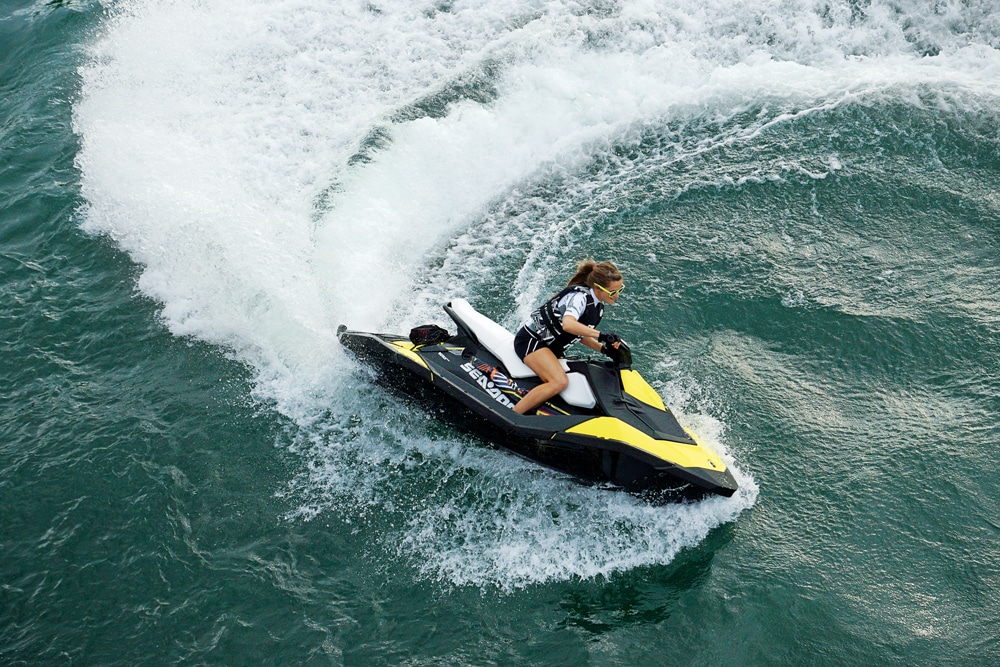
Sea-Doo Spark
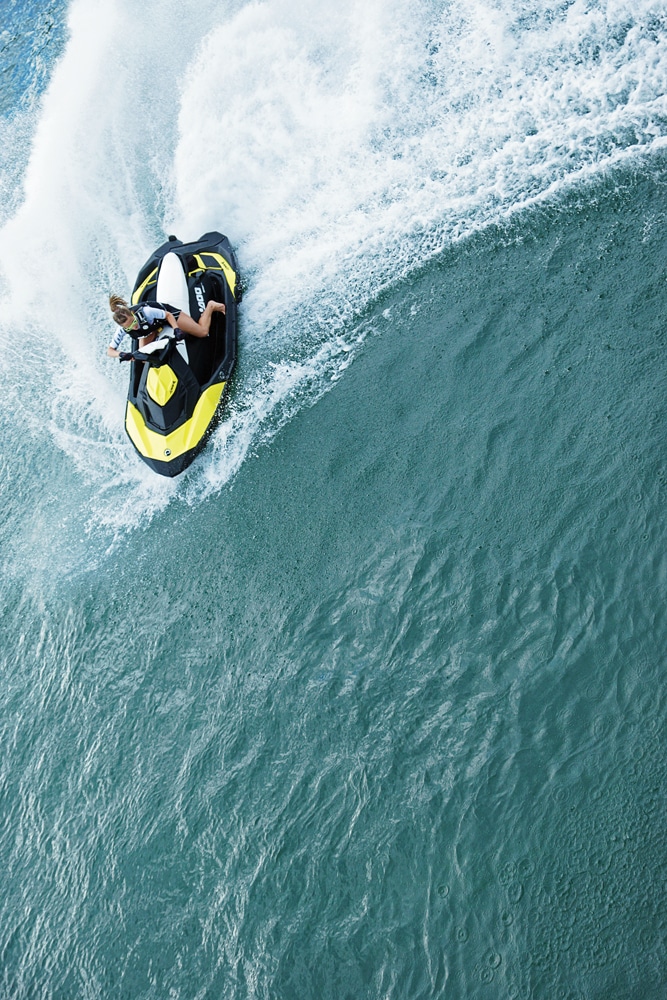
Sea-Doo Spark
As to the Spark’s handling, it’s noticeably looser than the “carve-on-rails” style common in today’s market. That makes the Spark a bit of a throwback, a description Sea-Doo enthusiastically embraces. Turns out, designers wanted the Spark to display the looser, more playful handling of the company’s iconic SP. Snap it into a quick corner and shift your weight to break loose the stern, and the Spark spins a 180 like that craft of old. Crank that same turn and throw your weight forward over the bow, and you can even pivot the craft on its nose, working your way through a full 360-degree spin. It’s the type of handling long since lost in the personal watercraft market, and one that kept me more than entertained during my test ride. That’s not to say the Spark can’t carve a turn. Lean in and keep your outside foot firmly planted to anchor the stern, and you’re tearing up an imaginary buoy course with a feel similar to that on Yamaha’s old-school WaveBlaster. It’s fun, and can be as mild or wild as you like.
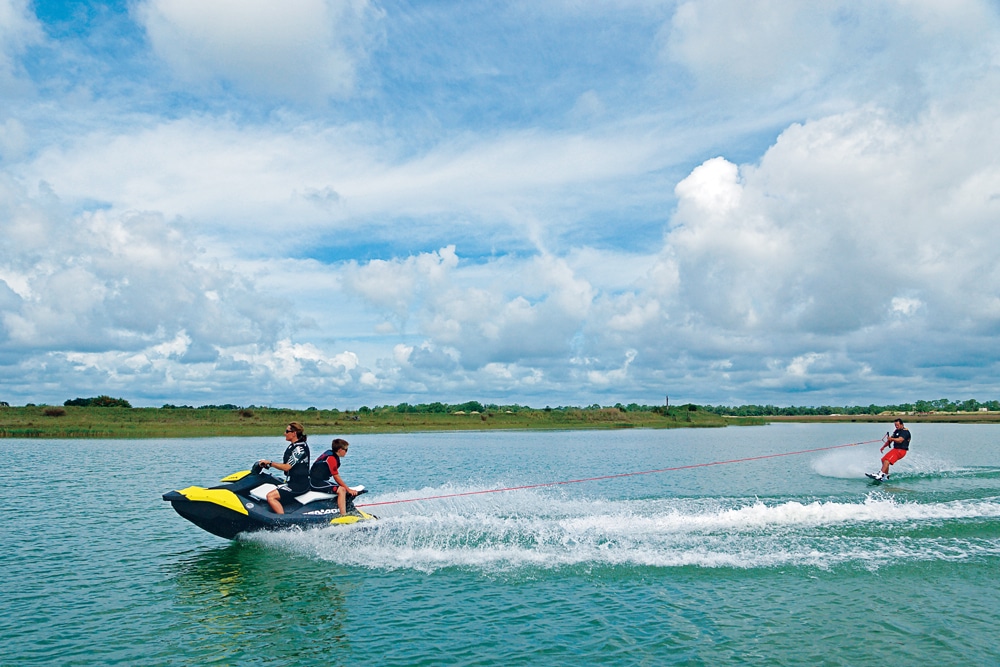
Sea-Doo Spark
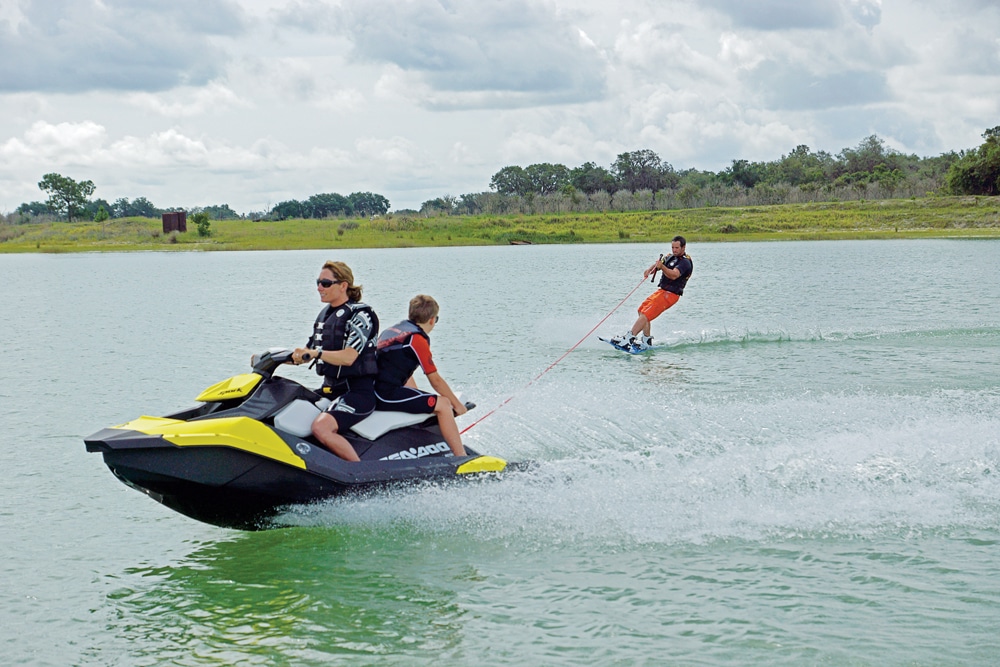
Sea-Doo Spark
But now, the caveat. It’s the kind of fun that even Sea-Doo admits should be mostly contained to smaller bodies of water. Given its diminutive size and light weight, I don’t think many people would enjoy taking the Spark on a large, choppy waterway. The Spark is also pretty much a solo machine. Though technically a two-seater, I’d rather go it alone in the model’s base configuration. An available hull extension makes the craft into a three-seater, which is a plus for towing duties, but again I’d subtract one for any extended cruising comfort.
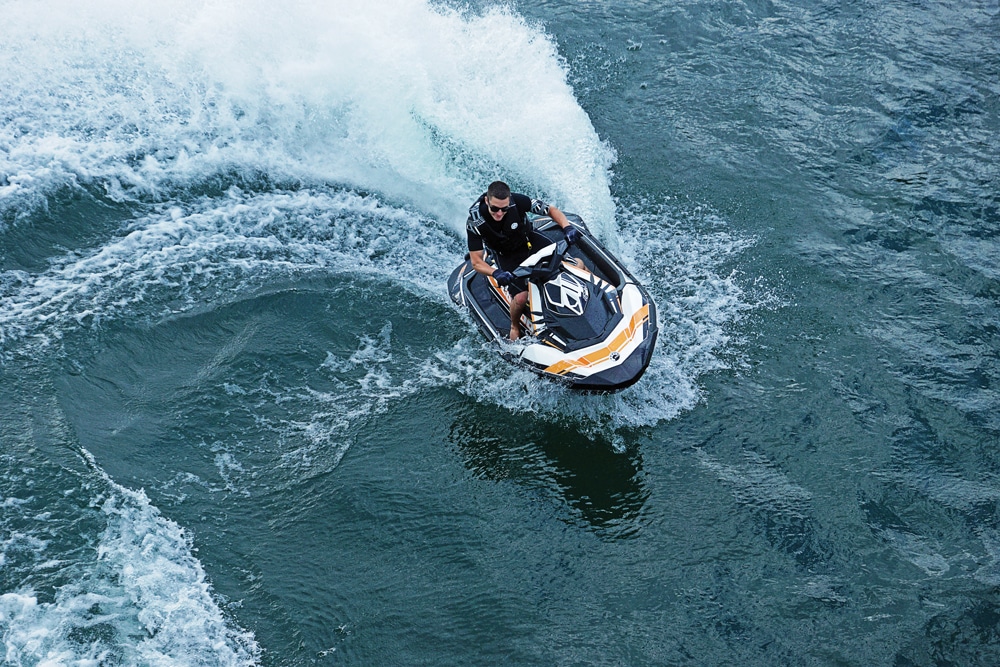
Sea-Doo Spark
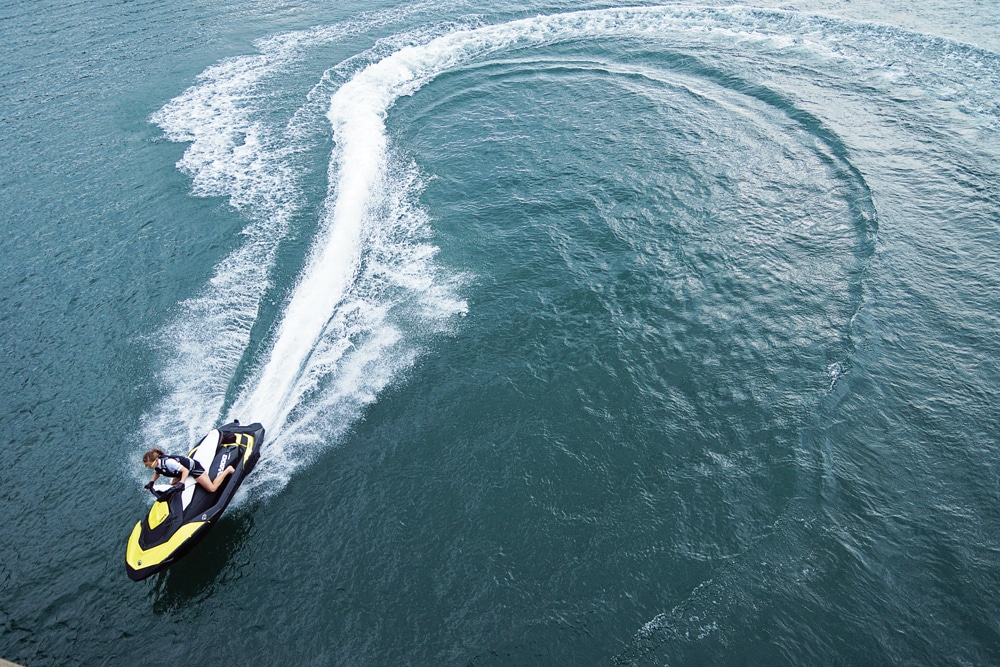
Sea-Doo Spark
Only time will tell if the Spark can truly jump-start PWC sales, but I think it’s important to realize the craft isn’t a simple no-brainer — even for the purely introductory buyer. While that $4,999 starting price is enticing, when optioned to include the 90 hp engine, three-passenger hull extension, storage compartment and an aft step, the Spark climbs to $6,499. If you plan to frequently ride with multiple passengers, pull skiers and wakeboarders, live where the seas are sometimes angry, or just plain feel the need for speed, you owe it to yourself to consider the next step up in the food chain. Sea-Doo’s own 130 hp GTI 130 is a true, full-featured three-seater for $8,199; Yamaha’s 110 hp VX Sport runs $7,999. Either may make a better long-term investment for serious customers. But if you’re just looking for a way to get out on the water — or perhaps want to add a playful, self-propelled toy with old-school fun factor to your collection — the Spark has definitely got some heat.
And you won’t have to burn through your cash to feel it.
Comparable models: Sea-Doo GTI 130, Yamaha VX Sport
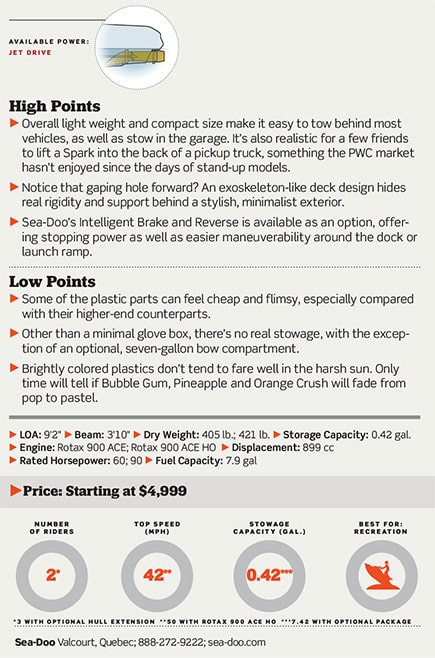
Sea-Doo Spark
Sea-Doo – Valcourt, Quebec; 888-272–9222; sea-doo.com









